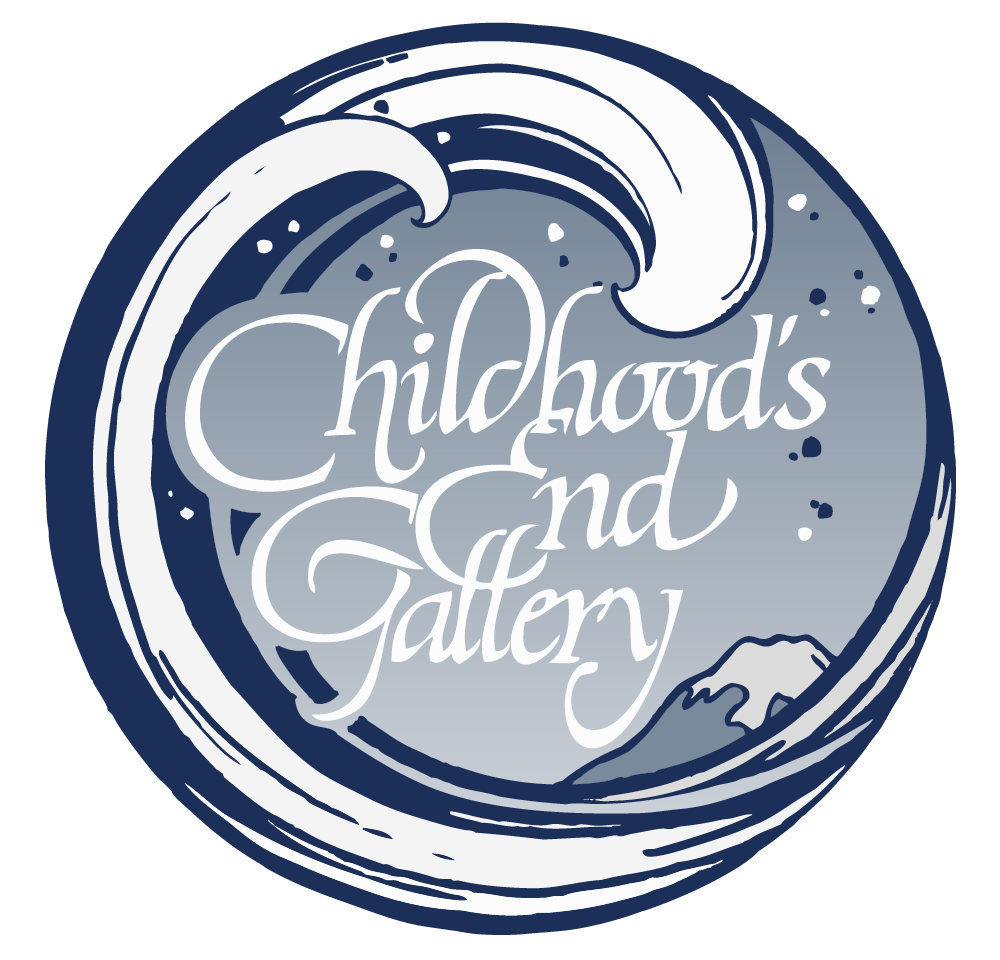Barbara Pihos
My work begins outdoors with a search for a location that strikes an emotional response in me. I may find it nearby in a place I see often or far away at the end of a journey.
Returning to my studio with sketches, I prepare a zinc plate by degreasing and brushing on an acid-resistant ground. I apply conte chalk to the back of my sketch; place it on the grounded plate and redraw, thereby transferring the sketch to the plate. Using a needle to draw through the ground, I add an abundance of details.
I submerge the plate in a tray of nitric acid heated to 80 degrees Fahrenheit for 20-30 minutes to bite the image into the plate. I draw finer details and etch again for 10-15 minutes. To proof the plate I remove the ground, cover it with black etching ink, and place it on my etching press bed with damp, rag paper and etching blankets on top. I then hand-crank it through the press. This proof functions as a guide to the painting process of the aquatint technique and as the structure of the final work.
To do the aquatint I grind gum crystals into a very fine powder and place it in a piece of cotton cloth. I then hit the cloth bundle, releasing a cloud of powder into the air over the degreased plate to get an even 60% coverage. Next I heat the underside of the plate with a torch, which allows the acid-resistant powder to melt and adhere to the plate. However, I'm careful to leave the other 40% of surface area open for acid biting to create the tones of the aquatint. The plate is now ready for painting with acid-resistant shellac. The first painting is of the white areas. The plate is then submerged in the same acid as before, but the timing is very short- 10 seconds. The second painting is of the very light gray areas, and the time in the acid is 20 seconds. I proceed with more paintings- a total of eight. As the time in the acid is increased, the areas not yet stopped-out are etched deeper and will hold more ink, thereby printing darker. As I am painting the very dark gray areas, I have only my memory to tell me where the whites and lighter grays will be, as there is no way to tell by looking at the plate.
After 2-3 months of work, the final step is cleaning off the varnish and melted powder of the aquatint ground, inking and pulling a proof.
My detailed style using two drawings and eight stages of aquatint is complex, unique and anxiety-producing because the result is unknown until the work is finished.
The theme of my work is "Unspoiled Nature." I am drawn to the northern woods of our continent to find tranquility and renewal of spirit.
My work begins outdoors with a search for a location that strikes an emotional response in me. I may find it nearby in a place I see often or far away at the end of a journey.
Returning to my studio with sketches, I prepare a zinc plate by degreasing and brushing on an acid-resistant ground. I apply conte chalk to the back of my sketch; place it on the grounded plate and redraw, thereby transferring the sketch to the plate. Using a needle to draw through the ground, I add an abundance of details.
I submerge the plate in a tray of nitric acid heated to 80 degrees Fahrenheit for 20-30 minutes to bite the image into the plate. I draw finer details and etch again for 10-15 minutes. To proof the plate I remove the ground, cover it with black etching ink, and place it on my etching press bed with damp, rag paper and etching blankets on top. I then hand-crank it through the press. This proof functions as a guide to the painting process of the aquatint technique and as the structure of the final work.
To do the aquatint I grind gum crystals into a very fine powder and place it in a piece of cotton cloth. I then hit the cloth bundle, releasing a cloud of powder into the air over the degreased plate to get an even 60% coverage. Next I heat the underside of the plate with a torch, which allows the acid-resistant powder to melt and adhere to the plate. However, I'm careful to leave the other 40% of surface area open for acid biting to create the tones of the aquatint. The plate is now ready for painting with acid-resistant shellac. The first painting is of the white areas. The plate is then submerged in the same acid as before, but the timing is very short- 10 seconds. The second painting is of the very light gray areas, and the time in the acid is 20 seconds. I proceed with more paintings- a total of eight. As the time in the acid is increased, the areas not yet stopped-out are etched deeper and will hold more ink, thereby printing darker. As I am painting the very dark gray areas, I have only my memory to tell me where the whites and lighter grays will be, as there is no way to tell by looking at the plate.
After 2-3 months of work, the final step is cleaning off the varnish and melted powder of the aquatint ground, inking and pulling a proof.
My detailed style using two drawings and eight stages of aquatint is complex, unique and anxiety-producing because the result is unknown until the work is finished.
The theme of my work is "Unspoiled Nature." I am drawn to the northern woods of our continent to find tranquility and renewal of spirit.






